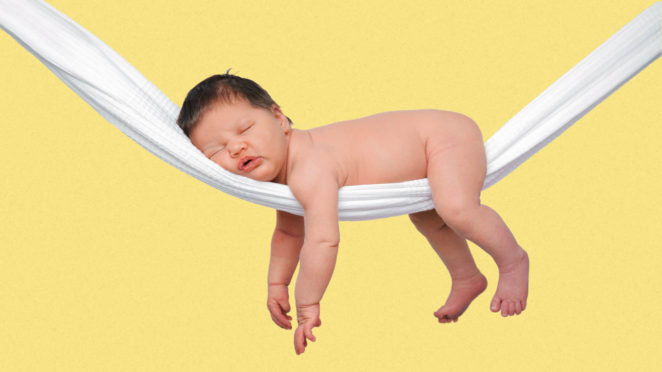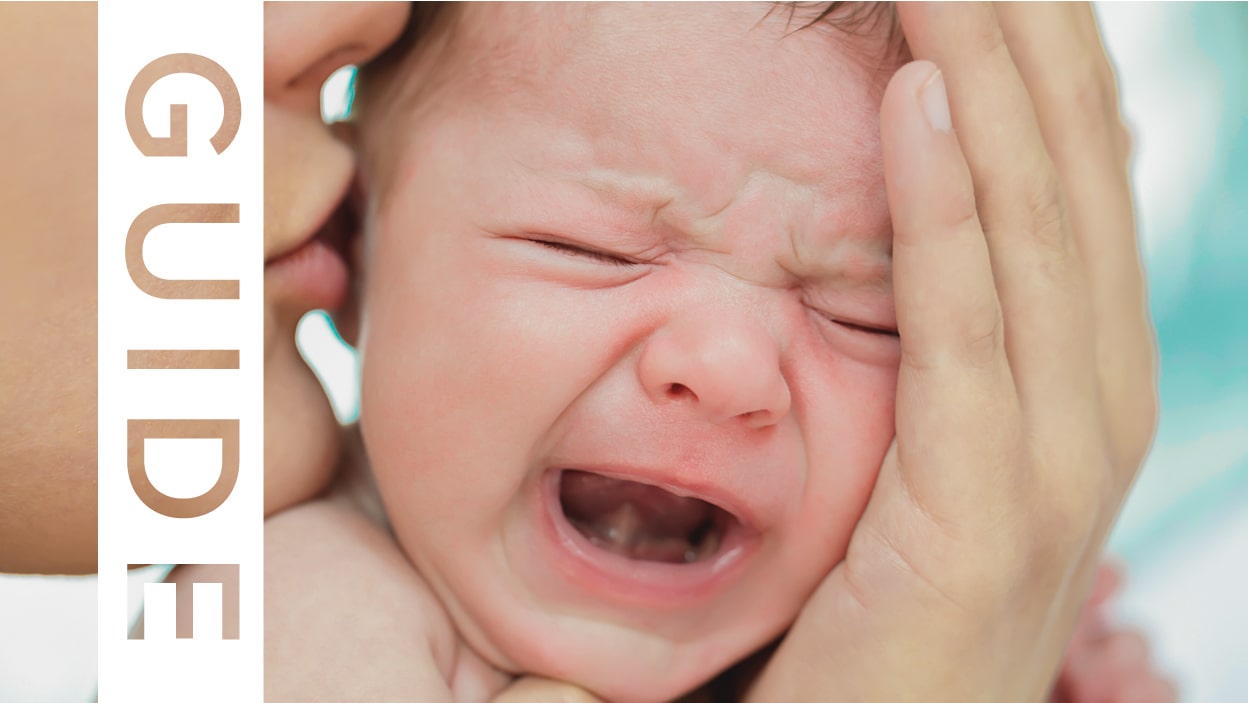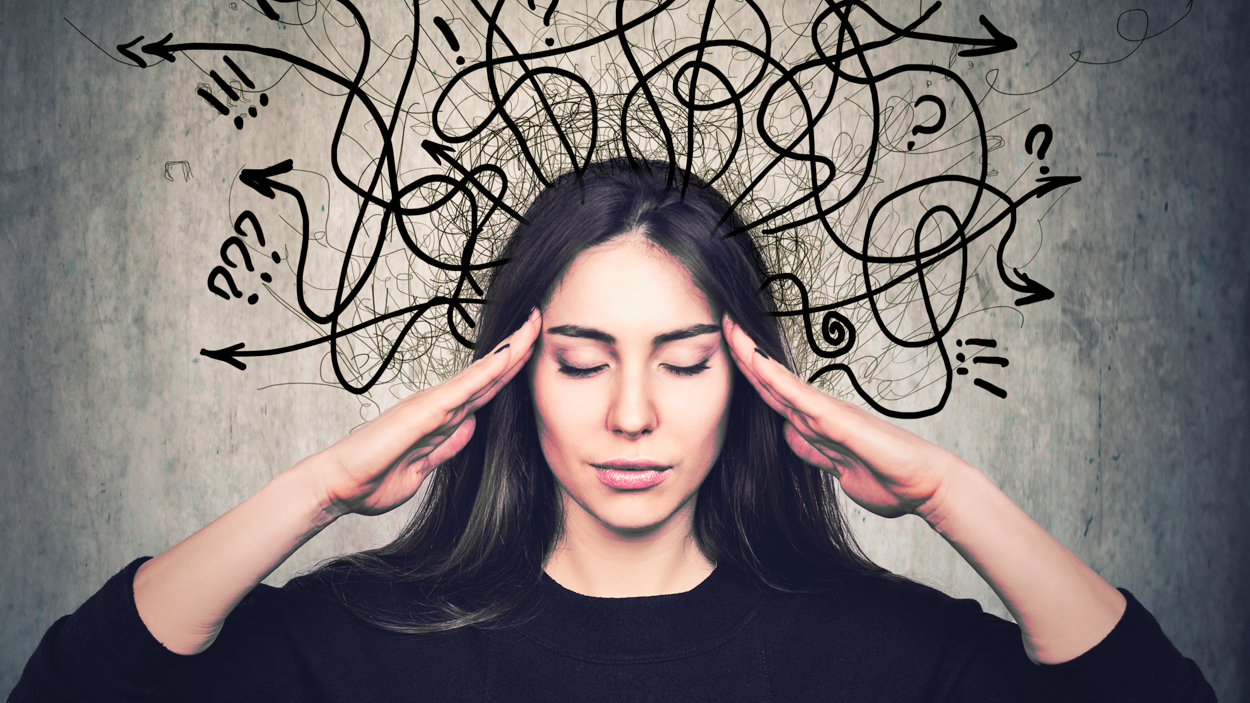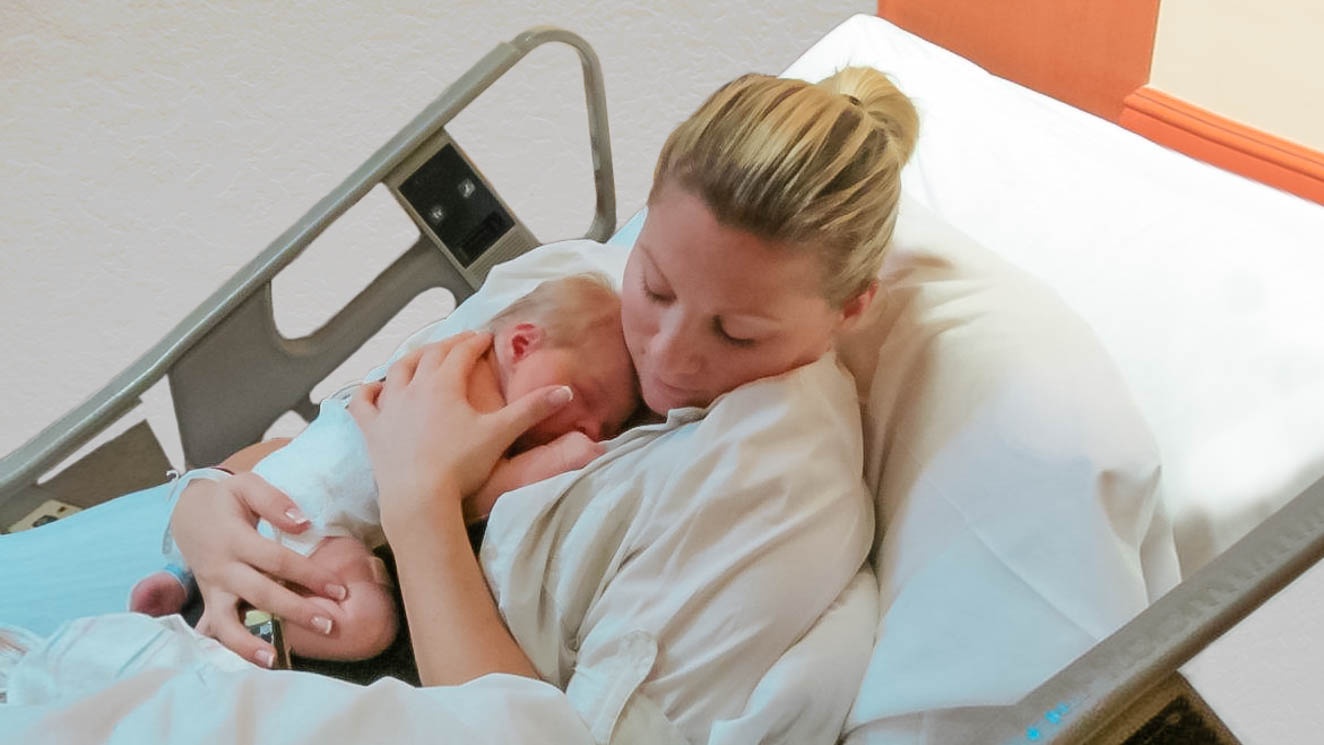

For every mom who has ever looked around her living room, counted the number of bouncing/ rocking/ swinging contraptions littered everywhere and felt an overwhelming, creeping shame at the un-Marie Kondo-ness of it all, take heart. Science says all that rocking, bouncing, and swaying is, indeed, for a good cause. Namely: sleep. (Not that we ever doubted you, Dr. Karp!)
A couple of new studies published in Current Biology indicate that what generations of mamas have instinctually done to soothe a crying child to sleep really works — and not just on babies but on adults (and mice!), too. Yep, turns out mammalian brains are wired to respond to being rocked, and there’s now science to show that swaying to sleep may result in falling asleep faster, better quality of sleep and improved memory formation, too. Talk dirty to us, Current Biology!
Here’s the skinny:
In one of the studies, EEG readings were used to analyze the brain responses of 18 healthy adults during overnights on three different nights: night one was just for acclimating to the new environment; night two was spent in a gently rocking bed, and night three was spent in a stationary bed.
Sure enough, the authors found that rocking
- shortened the length of time it took for participants to fall asleep
- shortened the length of time it took them to reach that deep, high-quality non-REM sleep
- reduced wakings during the night
- promoted longer periods of deeper sleep
(No measurements were taken on rocking’s effect on dark under-eye circles, unfortunately. Perhaps a follow-up study is in order?)
The researchers were also interested in whether rocking might impact memory; to test this, they gave the participants 46 random word pairs to memorize. In the mornings, subjects were given the first word and asked to recall the second. Again, rocking proved a boon: the study subjects’ recall was three times better on the mornings after those rockabye nights.
Subsequently, the researchers found a potential explanation for all the good stuff they found: the rocking motion resulted in brain oscillations specific to non-REM sleep, helping to synchronize neural activity in the parts of the brain involved in sleep and memory consolidation.
Because scientists are scientists, another experiment set out to study rocking’s effects on sleep… in mice. It found that, just like with people, rocking helped the mice fall asleep quicker and increased the length of their snoozes – although it did not seem to result in deeper sleep in the vermin (perhaps they were distracted by some rogue piece of cheese lying around the lab?).
More interesting is what they found when using mice with impaired vestibular systems, the organs in mammals’ inner ears that control sense of balance and spatial orientation. In these impaired mice, rocking provided no benefit. This finding confirmed the authors’ suspicion that rocking affects sleep specifically because of the way it stimulates the vestibular system…. think: that lovely, slightly disorienting yet irresistibly tranquilizing sensation you get when you’re swinging in a hammock.
While all of this is surely intriguing to sleep researchers and might lead to help for those with sleep disorders, the bottom line for moms is this: The bouncy ball stays. The swing, too. Because what could possibly spark more joy than a soundly snoozing babe?







